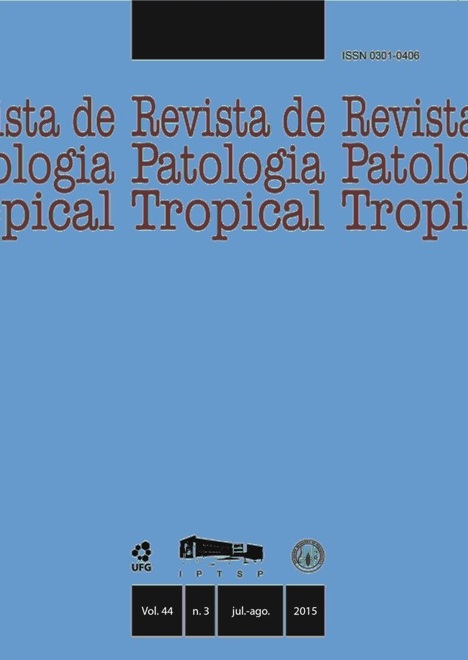ECOLOGICAL ASPECTS OF MOLLUSKS OF MEDICAL-VETERINARY IMPORTANCE IN THE PROVINCE OF VILLA CLARA, CUBA
DOI:
https://doi.org/10.5216/rpt.v44i3.38014Keywords:
Bioindicadors, distribution, ecology, malacofauna, malacology, Praticolella, Tarebia.Abstract
This work aims to determine some ecological aspects of river and terrestrial mollusks of medical-veterinary importance in 13 municipalities of the province of Villa Clara, Cuba during 2013. Samples were collected monthly in 477 mollusk farms. 21 species of fresh water (n=14) and terrestrial (n=7) snails were recorded. Two species were classified as endemic, 15 as local and four as introduced (exotic species). In relation to their frequency of occurrence, 14 species were constant (66.7%), five species were common (23.8%) and two were rare (9.5%). The four main species of freshwater snails were Tarebia granifera, Pomacea poeyana, Physella acuta and Corbicula fluminea in the municipalities of Santa Clara, Placetas, Ranchuelo, Camajuaní and Cifuentes. The most representative terrestrial mollusks were Praticolella griseola, Zachrysia auricoma and Galba cubensis, in the municipalities of Santa Clara and Placetas. Positive correlation between richness of species and mollusk abundance was found. Pomacea bridgesii and T. granifera are no less related to the other 20 species of mollusks based on similarity dendrograms. Increasing the maximum temperature and relative humidity decreases the total abundance of mollusks. There is a wide variety of species of mollusks of medicalveterinary importance in the province of Villa Clara, which may constitute an epidemiological risk to the province.Downloads
Downloads
Published
How to Cite
Issue
Section
License
The manuscript submission must be accompanied by a letter signed by all authors stating the full name and email address, confirming that the material has not been published or is under consideration for publication elsewhere, and agreeing to transfer copyright in all media and formats for Journal of Tropical Pathology. The authors will not be paid for published articles. They are solely responsible for the content of those articles, even if the Editor holds the right to adjust them to the norms of the journal.
The reviewers will not be paid for the peer review process.

